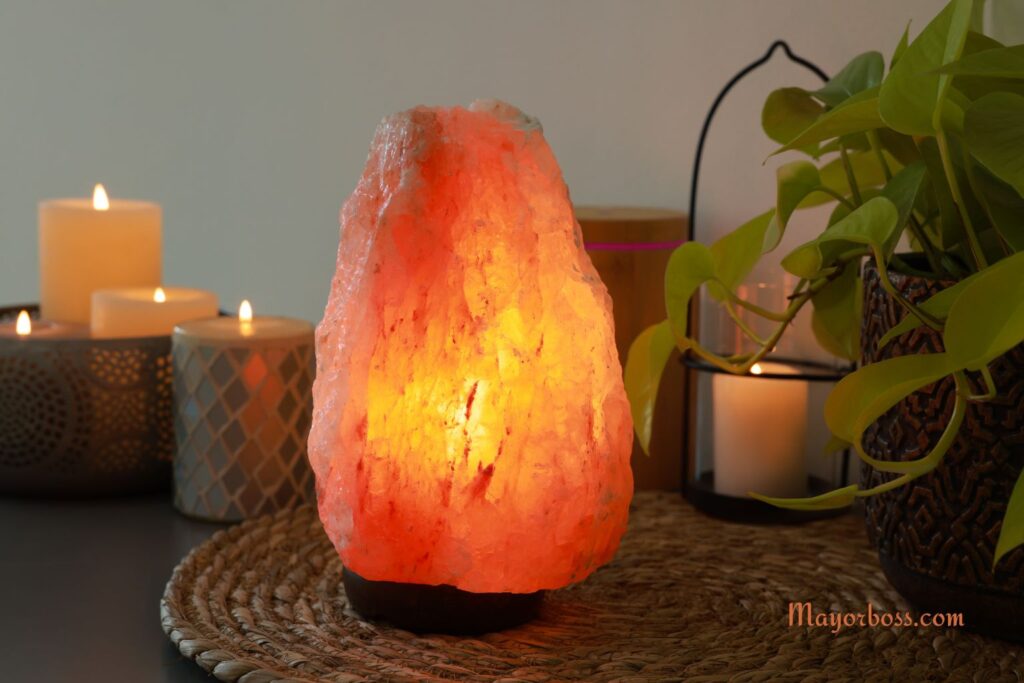This Is for Anyone Who Keeps Himalayan Salt Lamps in Their Home
Himalayan salt lamps have become popular in recent years. Their soft, amber glow adds a warm touch to any room. Many people place them in their bedrooms, living rooms, or workspaces. But beyond their calming light, you might have heard claims that these lamps offer health benefits. Some say they purify the air. Others believe they help you sleep better or reduce stress.
So, what’s the real story? Should you be keeping one in your home for your health? Let’s take a closer look at what science says and what you need to know.

What Are Himalayan Salt Lamps?
These lamps are made from pink salt crystals, usually mined from the Himalayan region of the Khewra Salt Mine in Pakistan. A bulb placed inside the hollowed-out salt chunk warms the crystal, producing a soft glow. Many people find this light relaxing. That alone can be a nice reason to have one in your home.
But most of the hype comes from the idea that these lamps do more than just look pretty.
The Claims: Do They Really Purify the Air?
One of the most common claims is that Himalayan salt lamps clean the air through a process called “hygroscopy.” In simple terms, this means they’re said to attract water molecules from the air, along with any dust, allergens, or pollutants those molecules carry. The theory is that once trapped, these particles stay on the lamp’s surface.
However, scientific evidence does not support this. The amount of moisture a salt lamp can absorb is minimal. It’s unlikely to have a strong effect on indoor air quality. Unlike air purifiers with filters, salt lamps don’t actually pull particles from the air in any measurable way.
Do They Release Negative Ions?
Another popular claim is that salt lamps release negative ions, which are believed to boost mood, improve sleep, and increase energy. Negative ions are found in nature, especially near waterfalls, forests, and beaches. They may help increase serotonin levels, which can support feelings of well-being.
Some studies suggest that negative ions may help reduce depression in certain people. But—and this is important—the number of negative ions produced by a salt lamp is very small. To make a noticeable impact, you’d need a much higher concentration, like the kind produced by special ionizing machines.
So, while the theory sounds promising, the actual effect from a salt lamp is likely too small to matter.
Can It Help with Allergies or Asthma?
There is no solid proof that Himalayan salt lamps help with allergies, asthma, or breathing problems. The idea that they remove allergens from the air hasn’t been confirmed by scientific research. If you or a family member has a respiratory condition, a high-quality air filter or proper medical treatment is a better option.
That said, the warm glow might create a calming environment, which could help reduce stress or anxiety. And if you sleep better in a peaceful space, that’s still a benefit worth noting.
Are There Any Real Benefits?

While the health claims don’t hold up under science, that doesn’t mean Himalayan salt lamps are useless. They can still be beneficial in other ways.
- They create a cozy atmosphere. The soft, orange light is less harsh than regular lamps. This makes them ideal for winding down before bed.
- They may support your sleep routine. Bright lights before bed can interfere with melatonin, the hormone that helps you sleep. A salt lamp gives off a gentle light that doesn’t disrupt your sleep-wake cycle.
- They offer a calming effect. Many people find the glow soothing. If it helps you feel more relaxed at the end of a stressful day, that’s a meaningful benefit.
In short, the value of a salt lamp may not come from what it does to the air, but how it makes you feel.
Are There Any Risks?
Salt lamps are generally safe to use, but there are a few things to keep in mind:
- Keep them dry. Salt attracts moisture, and if the lamp gets wet, it can start to “sweat” or leak. This may damage the surface it’s placed on.
- Supervise pets and children. Some pets, especially cats, may be tempted to lick the salt. This can be harmful if they ingest too much.
- Use proper lighting fixtures. Make sure the lamp has a certified electrical cord and bulb to prevent overheating or fire risks.
The Bottom Line
If you enjoy the look and feel of a Himalayan salt lamp, it’s perfectly fine to keep one in your home. Just know that it won’t cleanse the air or cure health problems. But if it helps you unwind, lowers your stress, or adds to your bedtime routine, that’s still a valuable use.
In the end, not every benefit has to be backed by science to have meaning. Sometimes, the way something makes you feel is reason enough.
So, if your salt lamp brings you peace and comfort, keep it glowing.
